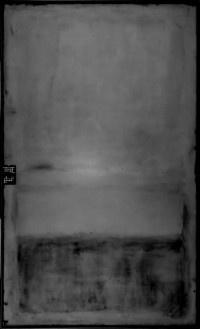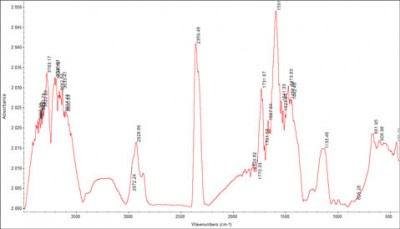Spectral Imaging
Spectral imaging is essential in Restoration and conservation of art objects. This kind of imaging is categorized under scientific imaging that can infiltrate art object’s different layers by visible and invisible radiations of light. And bring very important information about amount and depth of any possible damage as well as attached parts, repainting and form of brush strokes and etc. This Imaging process also give us a great document of art object which can make work hard or even impossible for forgery thus the documented details given by spectral imaging methods are unique and no duplicable. This advantage can be used by collectors, Museums and artists themselves to tag the art work and guarantee the authenticity and unity of their works. For this king of imaging this should be mentioned that this is not something that can be done in a computer software or any effect maker application on normal digital image. In Avam Atelier every image is taken by special imaging instrument such as coded radiation lamps, X-ray detector and developer or de filtered cameras and digital microscopes. Avam Restoration and conservation and authenticity atelier is facilitated by modern and specialized scientific imaging instruments.
X-ray examination is used to bring out the inner layers of art work, “Due to their ability to penetrate certain materials, X-rays are used for several nondestructive evaluation and testing applications, particularly for identifying flaws or cracks in structural components”.
Next imaging method we use is IR photography in Avam we use IRR which means Infrared reflection in order to get underneath  layers of a painting. Infrared has bigger radiation than visible light we cannot see it but we can feel it as heat. In restoration and authenticity we use this radiation to see the layers behind a painting and this there is no colour radiation in it the captured photos in IR are black and white. The reason for bringing out the hidden layers is the amount of reflection or absorption of IR radiation from Carbon inside the paints layers. Photographing IR has different methods such as using special IR filters on camera lens or with using IR light sources.
layers of a painting. Infrared has bigger radiation than visible light we cannot see it but we can feel it as heat. In restoration and authenticity we use this radiation to see the layers behind a painting and this there is no colour radiation in it the captured photos in IR are black and white. The reason for bringing out the hidden layers is the amount of reflection or absorption of IR radiation from Carbon inside the paints layers. Photographing IR has different methods such as using special IR filters on camera lens or with using IR light sources.
The other method is UV imaging, There are two UV imaging used by Avam atelier; one UVF which is using UV florescence source and the other is UVR, This method is based on capturing digital photograph of the reflection of a certain coded UV radiation source which is specially made for this atelier. There for making any similar picture in every detail is impossible which can be benefited by art work owners and museums.
The Ultra violet radiation is smaller than visible light and the best ratio for conservation is 360 nanometers that can be personalized by any service provider. Discovering pigments, moving of paint layers and stopping forgery are the most beneficial aspects of this imaging.
Microscope imaging is another method that is used in Avam Atelier with the power of 500X enlargement in order to inspect the paint layers and cracks. 
Cracks in a painting have a special pattern that is unique and can’t be copied so microscope imaging can document this unique patterns of any painting as well as giving useful information about paintings position.
VIS photography or visible light imaging is done by digital cameras and special lighting to convey the situation of art work with most details possible.
Restoration or Conservation?
“The main priority of present-day conservators is to ensure the long-term stability of the works of art in their care. The most important way of doing this is to control the surrounding environmental conditions, keeping light, temperature and humidity at steady levels appropriate to the types of materials the artist used. At the same time, safe methods of display and storage protect against accidental damage: for example, particularly fragile or vulnerable paintings are usually exhibited behind inconspicuous, low-reflecting glass..jpg)
These ways of preserving paintings are passive – they prevent things happening that might cause deterioration. The term preventive conservation is used to describe this sort of approach and it forms the basis of everything a modern conservator does. In an ideal world, paintings would be kept stable by 'preventive conservation' measures alone but, unfortunately, many are made of inherently unstable materials or have deteriorated in the past from neglect or mistreatment. Conservators therefore sometimes have to intervene and carry out structural treatment on paintings in order to repair or stabilise them.
Over the years, many remedies for treating damaged or deteriorated panels and canvases have been devised, some of which were sensitive and sympathetic, some drastic and even disastrous. The modern approach is to do as little as possible: if a painting can safely be left alone, nothing is done to it. This is a quite different philosophy from that of the nineteenth or earlier twentieth centuries, when canvases and panels were routinely subjected to major structural treatments, whether or not they needed them.” (David Bomford, Jill Dunkerto, Martin Wylid 2009)
Scientific Authenticity
In the past authenticity process of an art work was dependent on experts, who judged through brush strokes, texture, composition and colour, these people put their huge pack of knowledge into action to acknowledge the truth and to support it, but like judgment in a sport competition, misjudgments are part of the play. 
But what could be the soloution?
“the balance of power in the forgery detection game is about to shift. the art world has been closely monitoring scientific breakthroughs in fields as diverse as A.I., bitcoin, and protein analysis, and the technologies born from this research have either been appropriated by authenticators or will be soon. With these extra layers of security added to the vetting process, the current generation of copycat artists will find it increasingly difficult to hoodwink museum directors and collectors.” In Avam restoration and conservation and authenticity atelier inspectoral imaging and laboratory examinations are used in authenticity process as well as using Block chain and registering a Hash code for art works. The documents are archived in our database and a paper report is printed and sealed for art owner.









